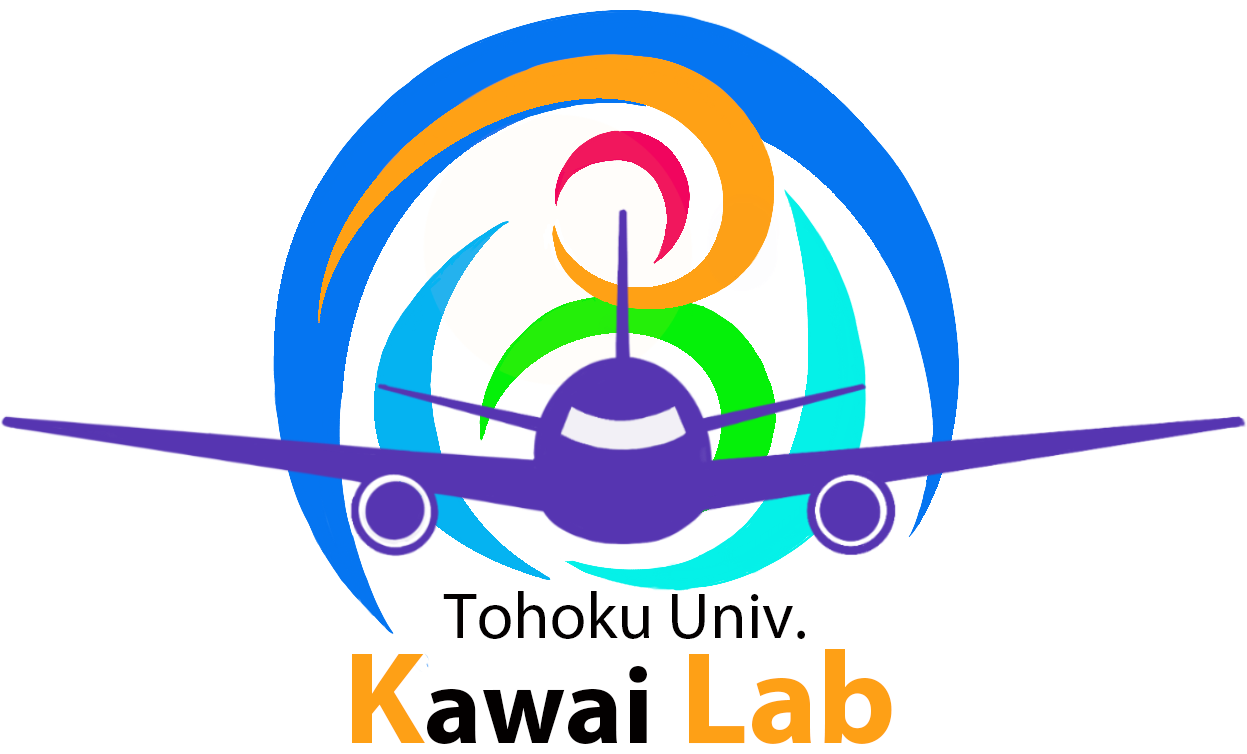 Menu
Menu
Broad interests in the fields of fluid mechanics, with an emphasis on compressible flow, turbulence, shock waves, mixing and combustion,
computational physics, high-fidelity numerical methods, physical modeling, data-driven science, machine learning, and uncertainty quantification.
|
Accuate numerical methods for high-fideliy simulations of compressible flows
|
Near-wall modeling for high-fidelity simulations of high Reynolds number flows
|

|
Based on unique ideas and theories, we develope numerical methods for high-fidelity simulations of compressible flows, such as turbulence, shocks, multi-component/multi-phase flows, etc.
|
|
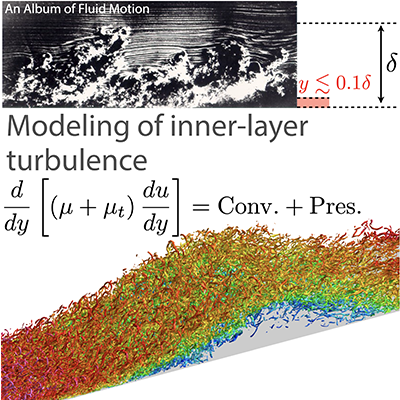
|
We develop a near-wall inner-layer turbulence modeling (wall modeled LES), which enables high-fidelity simulation of high-Reynolds-number turbulent flows such as flows around aircraft.
|
|
|
Next-generation fully automated high-fidelity compressible-flow solver
|
Data-science-based analysis of high-fidelity large-scale complex-flow data
|
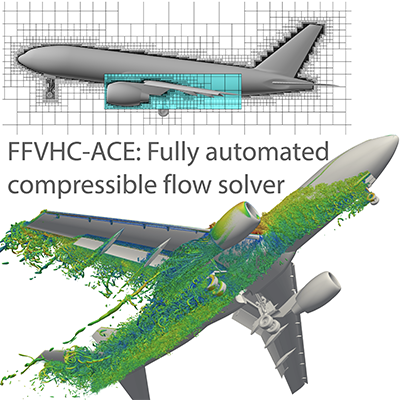
|
We develop a fully automated compressible flow solver, FFVHC-ACE, which enables robust and high-fidelity simulations by simply inputting geometry data. We also collaborate with industries for industrial applications.
|
|

|
We investigate data-science-based approaches that promote understanding complex flow phenomena by elucidating key flow physics from high-fidelity large-scale unsteady data.
|
|
|
Resolvent-based flow analysis and control
|
Machine-learning-enabled simulation methods and flow control
|
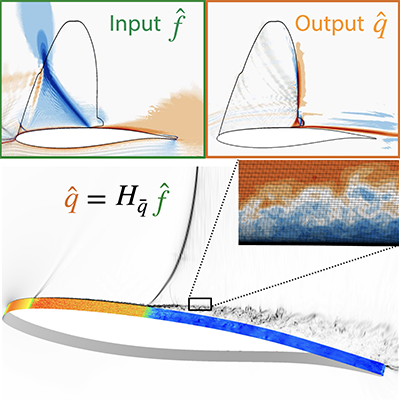
|
Based on the mathematically extracted input and output relations through resolvent analysis, we aim to gain insight into the physics of nonlinear complex flow phenomena and control these phenomena.
|
|

|
We attempt to significantly accelerate high-fidelity simulations and control complex turbulent flows by developing novel machine-learning-based methodologies.
|
|
|
High-fidelity numerical methods for moving/deforming boundary problems
|
Exploring and control of laminar-to-turbulent transition on heated/cooled wall
|

|
This study develops high-fidelity numerical methods on hierarchical Cartesian grids for solving various academic/industrial moving/deforming boundary problems, including the fluid-structure interaction.
|
|

|
This study investigates the physics of laminar-to-turbulent transition over heated/cooled flat plate/airfoil surfaces and also attempts to devise an effective method to control the transition with resolvent analysis.
|
|
Machine learning to turbulence super-resolution
and SGS modeling
|
Accerelating time integration with coarse time-steps using machine learning
|
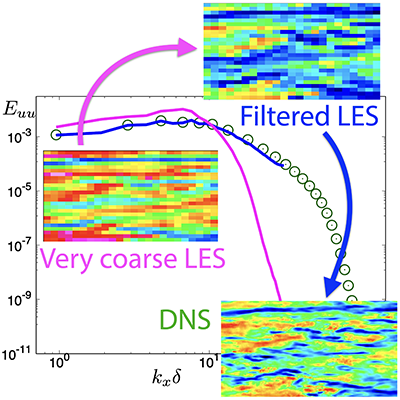
|
By utilizing machine-learning-based super-resolution of turbulent flows and extracting the SGS components, this study invents to drastically reduces the computational costs of high-fidelity simulations.
|
|
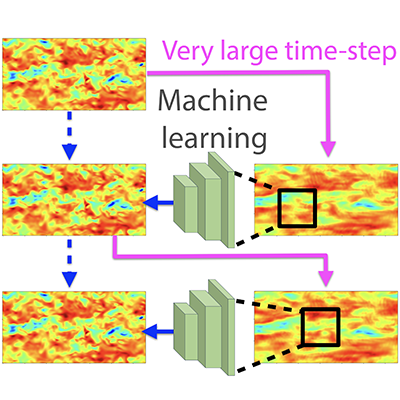
|
This work develops a machine-learning-based flow reconstruction method for correcting erroneous flows with a very large time-step size to accelerate time evolution.
|
|
|
Prediction of maximum lift and stall for aircraft development
|
Prediction of aircraft transonic buffet phenomena at high-speed flight conditions
|
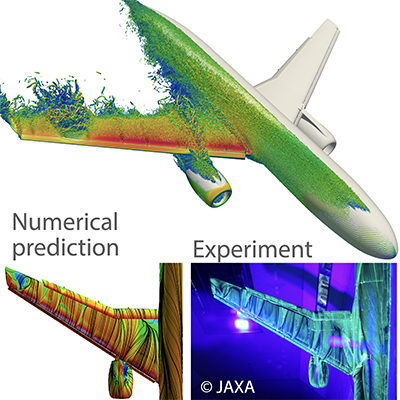
|
This project demonstrates the predictions of maximum lift and stall, which determine aircraft takeoff/landing performances, using high-fidelity simulations with FFVHC-ACE and the supercomputer Fugaku.
|
|
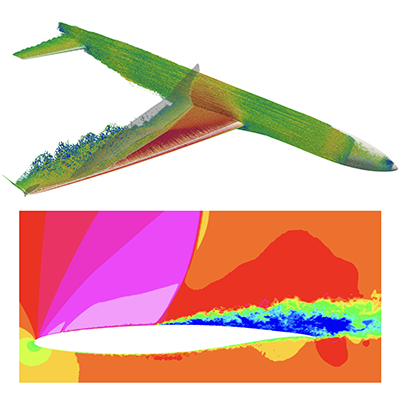
|
This study aims to predict aircraft transonic buffets using the compressible flow solver FFVHC-ACE and supercomputer Fugaku while also understanding the flow physics through data-driven science.
|
|
|
Numerical methods for predicting aircraft takeoff/landing aeroacoustic noise
|
Prediction of aeroelasticity and flutter phenomena using high-fidelity simulations
|
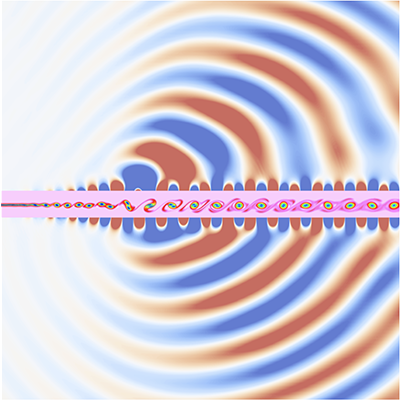
|
This study develops numerical methods that enable the prediction of aeroacoustic noise generated during aircraft takeoffs and landings by extending high-fidelity turbulence simulation methods.
|
|
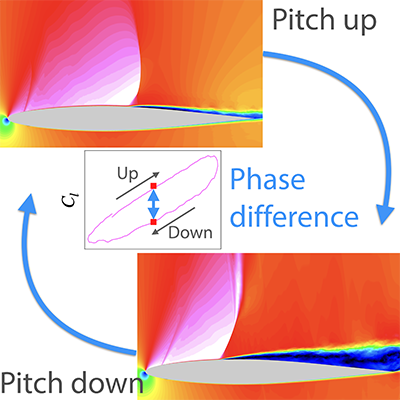
|
This study develops a prediction method for aeroelasticity and flutter phenomena at high Reynolds numbers. As a first step, we conduct the wall-modeled LES of turbulent flows around a forced oscillating airfoil.
|
|
|
Analysis of shock-wave oscillations in over-expanded rocket nozzles
|
|
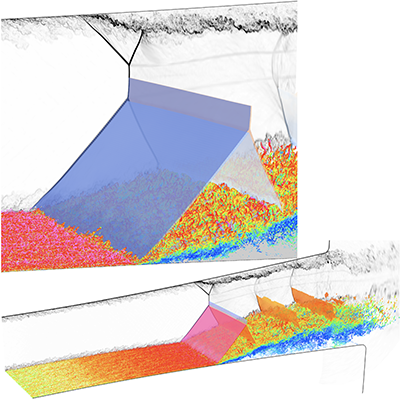
|
This study performs wall-modeled LES of self-sustained shock-wave oscillation phenomena in an over-expanded rocket nozzle to reveal the underlying physical mechanisms and wall-cooling effects.
|
|
|
|
|















